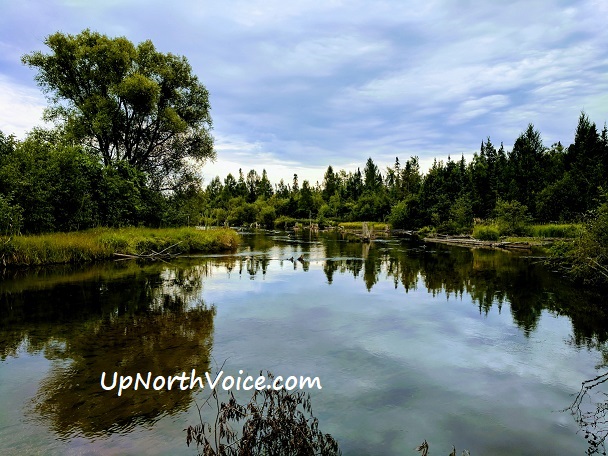There’s a story I tell my fishing friends to explain why they’re not catching anything in their “hotspot” when it was paying off just a week prior, and it involves 80,000 people dancing in the Tennessee countryside.
For most of the year, a field outside Manchester, Tenn. sits undisturbed. In late spring, semi trucks and cranes show up and build huge stages and walls of speakers. Soon after, people arrive with tents, coolers, sunglasses and colorful wristbands. The population of Manchester balloons tenfold.
Welcome to Bonnaroo Music & Arts Festival. For four days in June it’s nonstop music, self-expression and memories made or vaguely recalled. It ends as suddenly as it began and, as the last few weary revelers filter homeward, quiet is restored to the land.
The point of this story when I tell it is that fish, like people, are drawn to a specific place for a specific reason. For Bonnaroo, people come to a normally dull, sun-baked field for a momentary explosion of music and festivities. The same applies to a river, where fish move around throughout the year to meet their changing needs, find fleeting food sources, or to spawn.
Simply put, you’re as likely to enjoy great fishing in the same spot year round as you are to catch Stevie Wonder belting out an exuberant “Superstition” in a Tennessee cornfield in January. It helps to know where to look and when, and that’s done by reading the river.
“Being able to read a river means identifying the different parts of a river system and understanding the contribution each piece makes to the ecosystem of plants and animals that live there,” said Josh Leisen, Senior Project Manager for Huron Pines and an experienced fisherman of Northern Michigan’s streams and rivers.
As rivers flow through their landscape, they follow a repeating pattern of natural features: riffles, runs, pools and glides, and each one offers something different for the fish and other organisms that live in the river.
Riffles are areas where water flows straight and fast over shallow gravel or cobblestones, making the water surface choppy and turbulent. This is a good spot for trout to dart out and grab food without much risk of being seen by predators but staying too long here takes a lot of energy. It’s also where some insect larvae burrow into gravel while waiting to hatch.
Runs are narrow, deep channels where trout can hide in undercut banks where grass and plant roots, washed of soil, hang over the river’s edge and provide cover and shade. Pools offer similar protection with areas of wider, slow-moving water that form behind boulders and logjams. Aquatic insects like it here too since they can hide in the woody debris.
Glides are found just downstream of pools where the stream bottom rises again and causes the current to speed up. This is where trout and salmon spawn because the rushing water delivers fresh oxygen to their eggs and keeps them free of silt.
On a larger scale, trout move from one end of the river system to the other throughout the year in response to water temperatures, insect hatches and to breed. Because this migration is necessary for a trout’s life cycle, being able to move to different parts of a river unhindered is critical. This is part of why Huron Pines is heading up two major road-stream crossing projects in Montmorency County this year—one on the East Branch Black River and another on Gilchrist Creek, a tributary of the Thunder Bay River.
Even if you don’t fish, knowing how to read the river can help you wade, kayak or canoe more safely by understanding how water moves through different river features, Leisen said.
“Reading the river can help hone your observation skills of the natural world and help you develop a deeper understanding and appreciation of rivers,” Leisen said. “But knowing how to think like a fish can really help you improve your fishing skills too.”
The fish are partying somewhere out there. Put on your sunglasses and go join the fun.
###
UpNorthVoice.com and Up North Voice are Northern Michigan’s source for community news.
We cover seven counties that include the following communities: Waters, Hale, Roscommon, St. Helen, Houghton Lake, Prudenville, Grayling, Frederic, Gaylord, Johannesburg, Lewiston, Atlanta, Comins, Fairview, Mio, Rose City, West Branch, Lupton, Skidway Lake, Sand Lake area, Glennie, Oscoda, East Tawas, Tawas City, and National City.
We are also a full-service commercial design and printing house. Our specialty is custom commercial printing, as well as the creation of clothing, cups and other marketing products.
To submit information for publication, or for questions regarding promotion of your business, please email mconstance@UpNorthVoice.com, or call 989-275-1170.
#Waters #Hale #Roscommon #St. Helen #Houghton Lake #Prudenville #Grayling #Frederic #Gaylord #Johannesburg #Lewiston #Atlanta #Comins #Fairview #Mio #Rose City #West Branch #Lupton #Skidway Lake #SandLakearea #Glennie #Oscoda #EastTawas #TawasCity #National City. @upnorthvoice1
Up North Voice is a division of AuSable Media Group, LLC, based at 709 Lake Street in Roscommon
– Engle in a Communications Associate with Huron Pines



